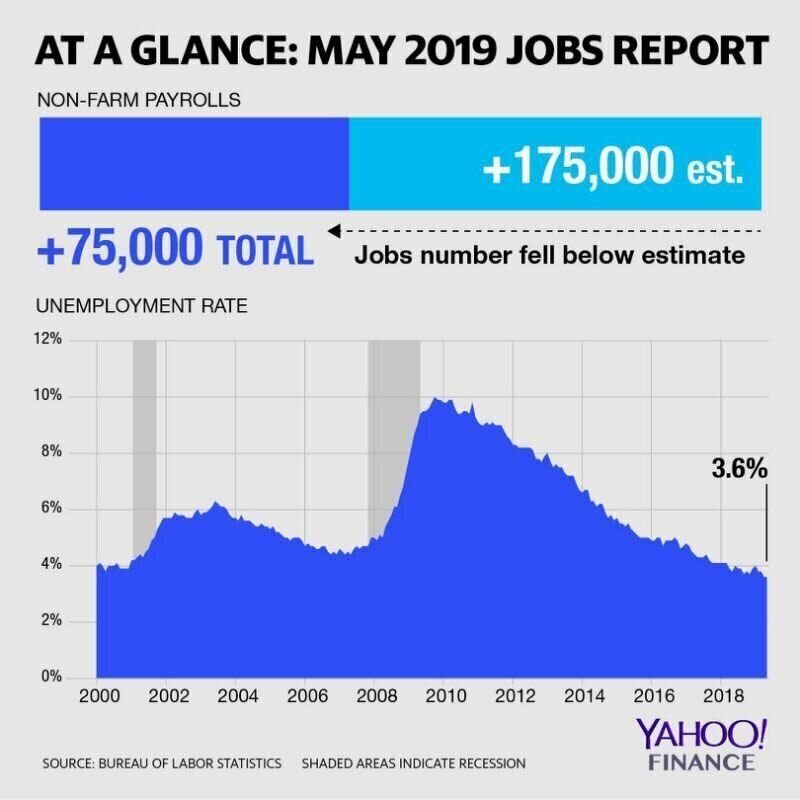The bad May non-farm payrolls report hints that the US economy is entering a new era
Investors should get used to limp jobs reports like the one that just hit the newswires Friday morning.
“This is a new era [for the economy],” JPMorgan Chase commercial banking economist Jim Glassman said on Yahoo Finance’s The First Trade. “You are not going to get 200,000 jobs a month forever in a fully employed economy and when the working age population is growing by 65,000.”
“This is a new reality. It will be hard for the market to get used to the idea,” Glassman added.
Even still, that new reality — a reflection of trade wars hurting U.S. businesses, an aging economic expansion and population growth — was tough on the eyes.
Job growth slowed more-than-expected in May, while the unemployment rate held steady at a near 50-year low, according to the U.S. Department of Labor’s Friday report.
The U.S. economy added a mere 75,000 non-farm payrolls in May. Most Wall Street economists were banking on an increase in the 150,000 to 180,000 range.
Another concern in the report is the sharp downward revisions to prior months job readings. April’s change in non-farm payrolls positions was cut to 224,000 from 263,000, and March’s new figure was brought down to 153,000, from the 189,000 seen previously.
Following the revisions, job gains averaged 151,000 per month over the past three months. That’s below the 200,000-plus pace of hiring from 2018.

U.S. economy is starting to sputter
The overall report gives a picture of a U.S. economy starting to sputter as President Donald Trump wages trade wars with China and Mexico. A disappointment on the labor front joins weaker than expected reads on U.S. durable goods spending and global manufacturing conditions.
“It is hard to find good news in this report and clearly points to a slowdown in activity,” Bank of America Merrill Lynch economists wrote soon after the jobs report was released. Strategists at Allianz flat out said via an emailed note that the U.S. economy is near the end of its expansionary business cycle.
Nevertheless, the Dow Jones Industrial Average shrugged off the weak reading on jobs. The Dow surged more than 270 points in early trading Friday on hopes that the labor market sluggishness would spur the Federal Reserve to slash interest rates.
Remember, Fed officials from Chairman Jerome Powell to Fed Governor Lael Brainard struck dovish tones in their comments to markets this week.
“The silver lining in this bad jobs report is that it makes it easier for the Fed to cut interest rates,” Invesco Chief Global Markets Strategist Kristina Hooper told Yahoo Finance. “I don’t think we are anywhere near a recession, but we are certainly experiencing a slowdown.”
Emily McCormick contributed to this story.
Brian Sozzi is an editor-at-large and co-host of ‘The First Trade’ at Yahoo Finance. Follow Brian Sozzi him on Twitter @BrianSozzi.
Read the latest financial and business news from Yahoo Finance
Why items at Dollar Tree will soon cost you way more than $1
Why the stock market is one or two bad economic reports away from a collapse
Follow Yahoo Finance on Twitter, Facebook, Instagram, Flipboard, SmartNews, LinkedIn, YouTube, and reddit.

 Yahoo Finance
Yahoo Finance 